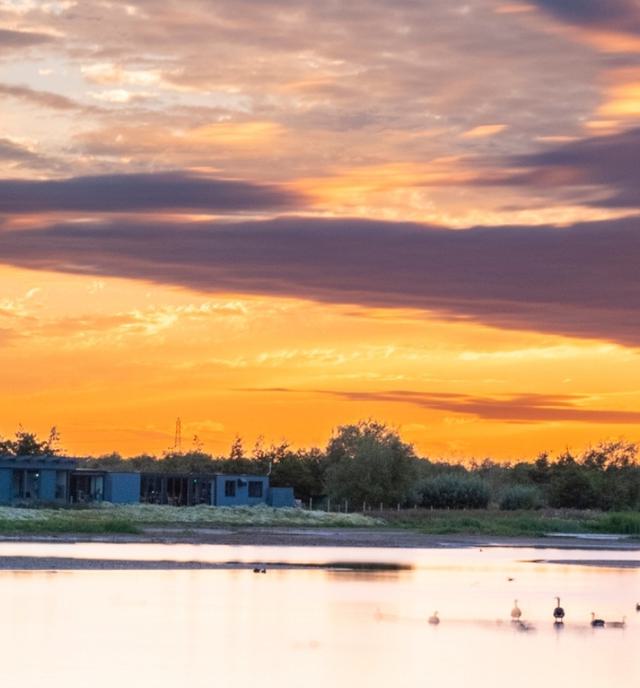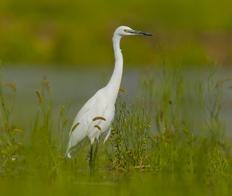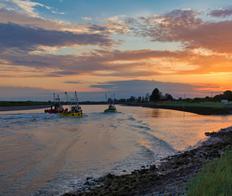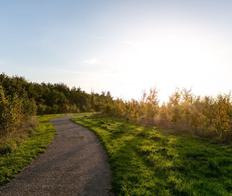RSPB's Guide to Spring at Frampton Marsh
Learn the history of RSPB Frampton Marsh nature reserve and the various birds, hares, and other wildlife that call this habitat home.

On the outskirts of Boston, nestled against The Wash, lies RSPB nature reserve Frampton Marsh
by Chris Andrews, RSPB
From humble beginnings in 1984, an expansion in 2009, and a recent redevelopment of the visitor facilities it is fast becoming a Mecca for wildlife lovers from right across the UK. The combination of a friendly welcome, easily seen wildlife spectacles, and accessible facilities including a popular new café have made it one of the places to come for anyone with an interest in the natural world.
Spring is always an exciting time in nature, as the fresh year starts and new life emerges. Eggs are a potent symbol of this, as chicks emerge from the seemingly lifeless object. Which, of course, is why they are also associated with Easter. Each year, the reserve puts on a very popular Easter trail connected to eggs, with scores of local youngsters taking part in the challenges and leaving with a tasty prize. This is just one of many activities the reserve organises, bringing local families out to enjoy their local countryside and wildlife.
Connected to Easter eggs is the Easter bunny. But what can a rabbit have to do with eggs? Well, in reality it is a hare, rather than a rabbit. You see some birds such as Lapwings nest on open fields. Hares also live out on these fields, relying on stealth and speed to evade predators. Rather than disappearing down a burrow like a rabbit, they lie still hoping to avoid notice, then take off at breakneck speed if you get too close. So, people walking across a field might disturb a hare from almost underfoot and then, searching in the same area, find a nest with eggs in it. Hence the story of the Easter bunny leaving eggs!

Hares
Spring is actually a great time to see Brown Hares, as they chase each other around the fields then rear up and engage in boxing matches. The Mad March Hare. It was once thought that this was two males fighting over territory or a female. The trust is slightly different. A male tries to woo a female, who often doesn’t appreciate it. So, she moves away, he follows, and so it goes faster and faster until he is chasing her at full speed. Of course, sooner or later she grows very tired of this, the boxing matches are the females turning round and giving the unwanted suitor a clip around the ear!

Birds
Going back to eggs and birds, birds like Lapwings are the whole reason for the reserve existing. The Wash, that large bite out of the eastern coast of England, is full of mudflats which are an all-you-can-eat buffet for all sorts of wading birds. But birds don’t just want to eat, they want to breed too. The tidal mudflats are no use for this, which is where places like Frampton Marsh come in. Created from arable land, the wet fields and pools here are an ideal nesting ground and nursery for wading birds. Before the reserve was created there were 5 Lapwings nesting in the area, now 15 years later that number is now 88. Good news for the bird that sits atop the Lincolnshire coat of arms! Avocets, the elegant black and white wading bird that is the emblem of the RSPB have similarly done well. Before the reserve opened there were none at all, now in the spring the air is alive with the sound of 160 pairs nesting and squabbling with their neighbours. And the story is repeated with numerous other species.
So, this spring, come and explore Frampton Marsh. Spot the nesting birds, watch the boxing hares, and take the youngsters out for a fun-filled time in nature.

Images provided by Neil Smith and Sam Turley.
Check out more Nature Reserves & Green Spaces

Moulton Marsh
Moulton Marsh is a nature reserve in the south of Lincolnshire at the mouth of the Wash alongside the river Welland, popular with bird-watchers and…

The Wash
Made up of a extensive labyrinthe of salt marshes, The Wash is amongst the largest esturies in the UK and provides glorious natural habitat for a…

Fenside Woods
Scenic riverside woodlands bursting with nature and wildflower meadows in Boston’s countryside.

Witham Way Country Park
Witham Way Country Park is a haven for local wildlife with a mosaic of woodland, grassland, and scrub available to enjoy.
Article Tags:
Share this article:
Search Articles
Keywords